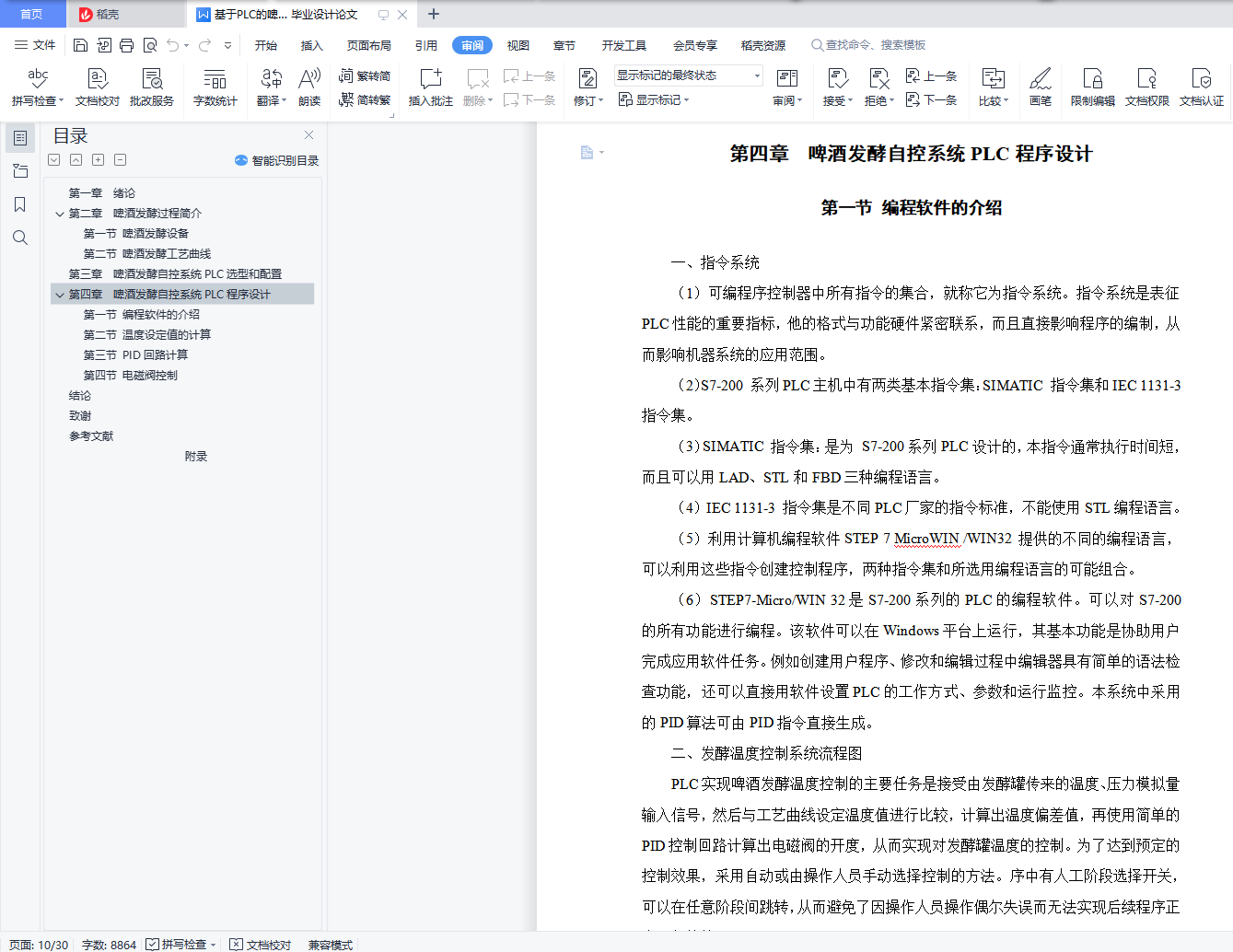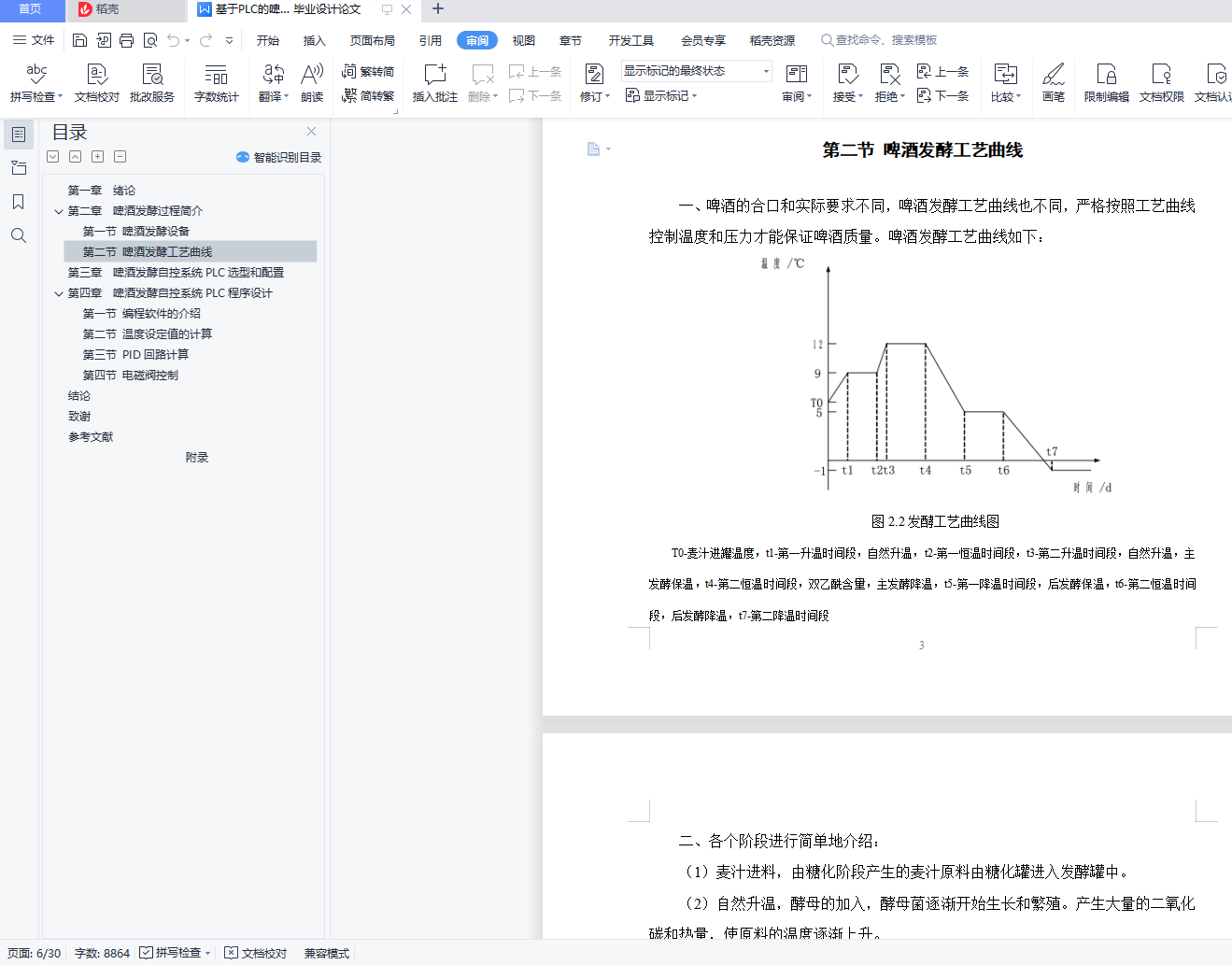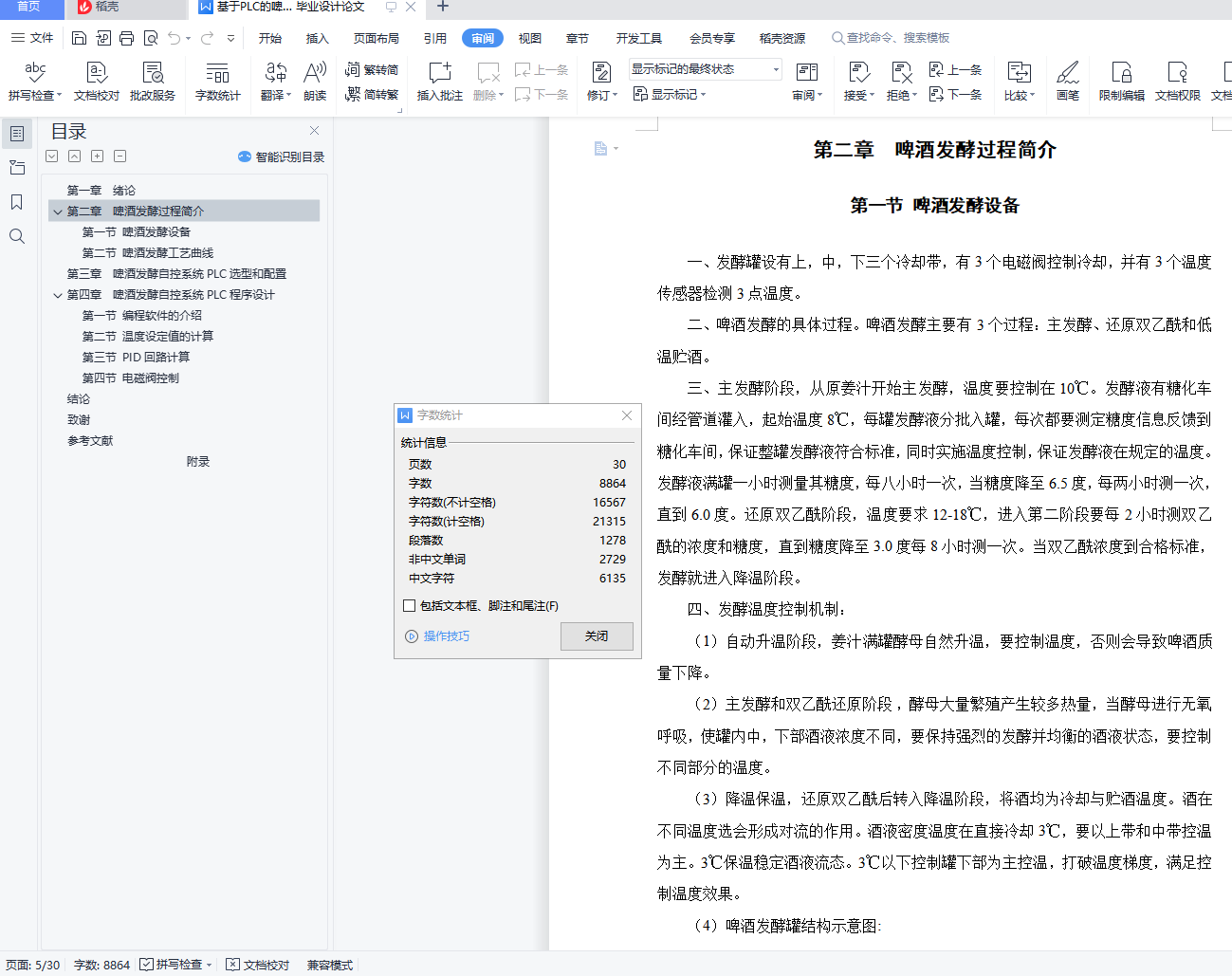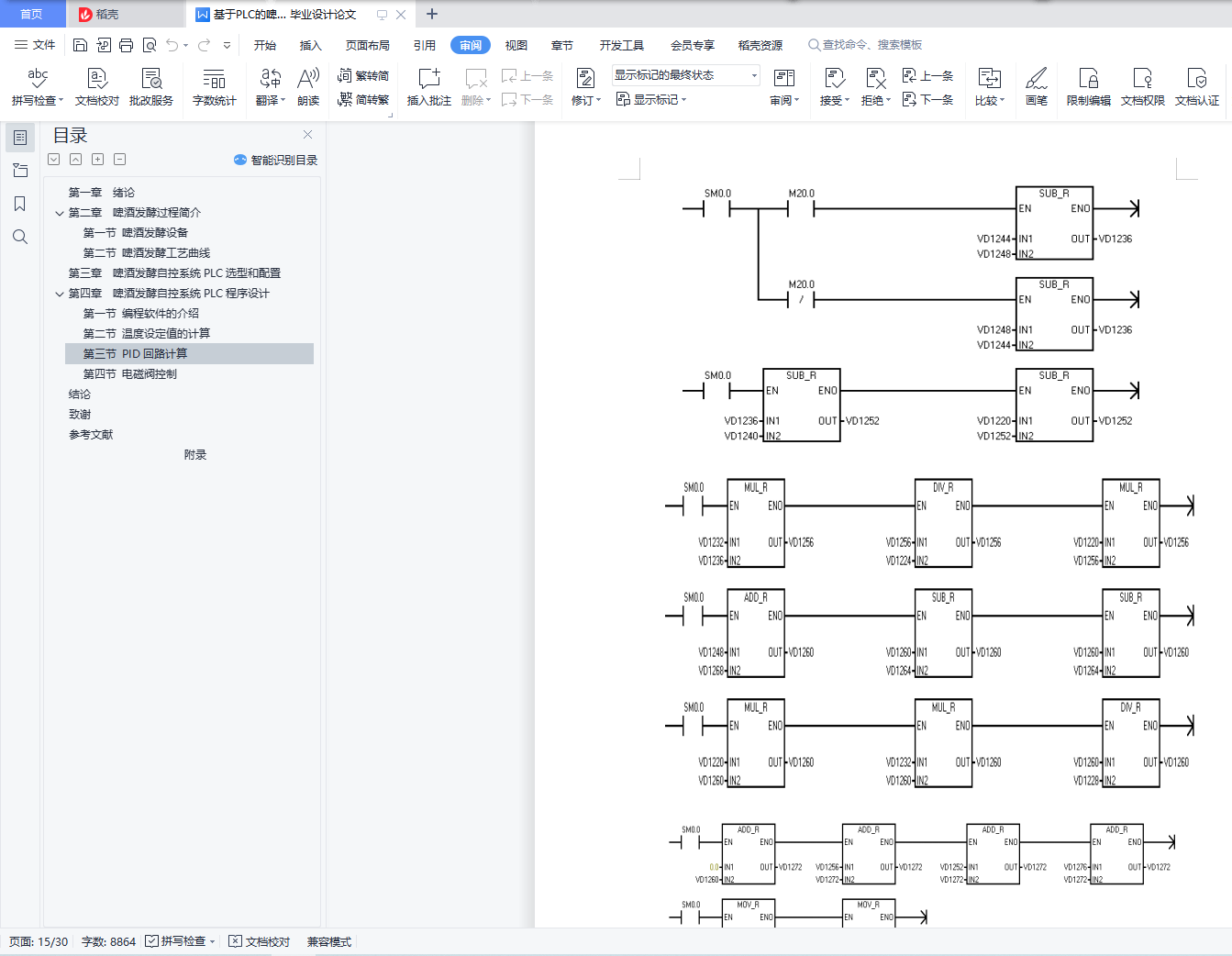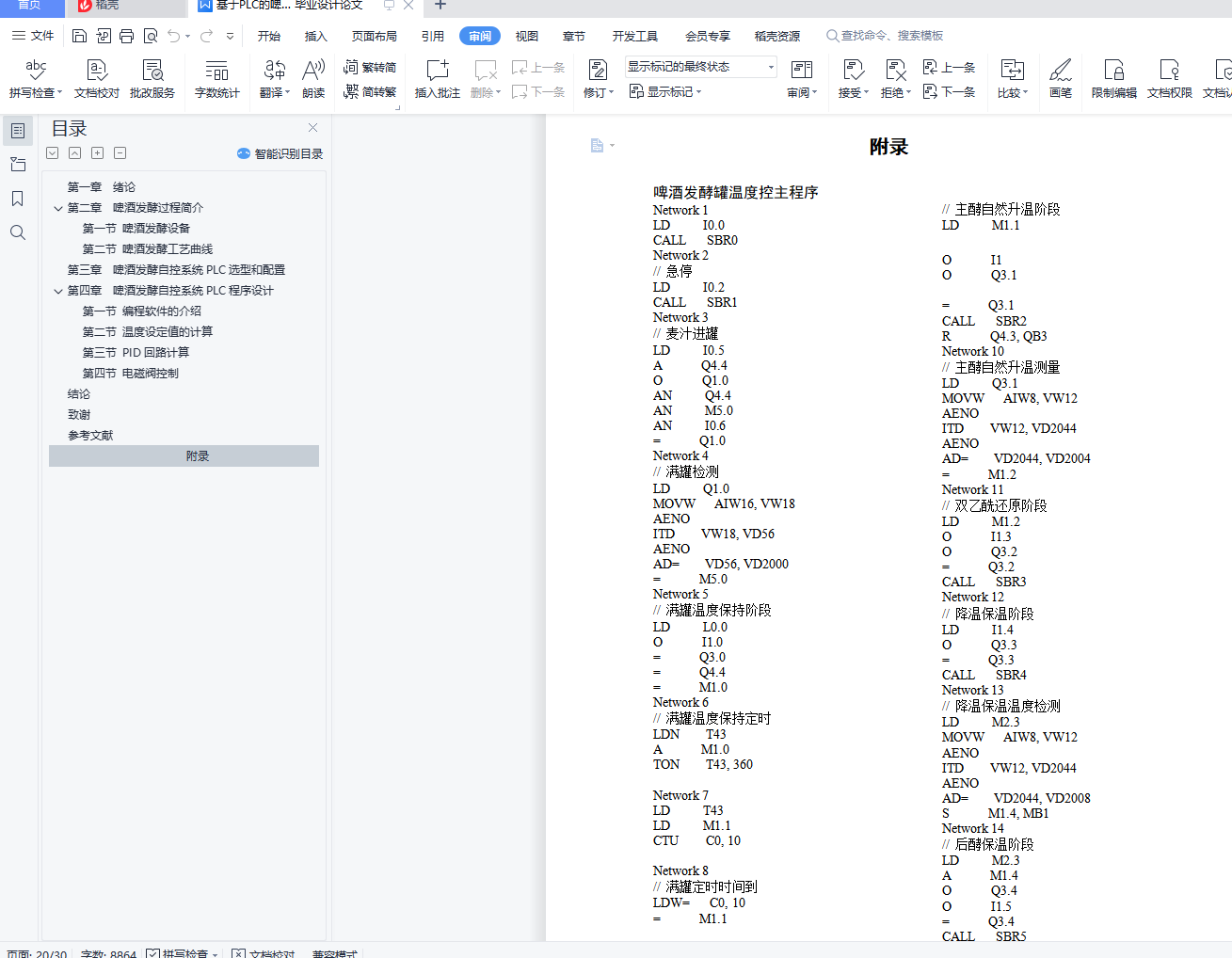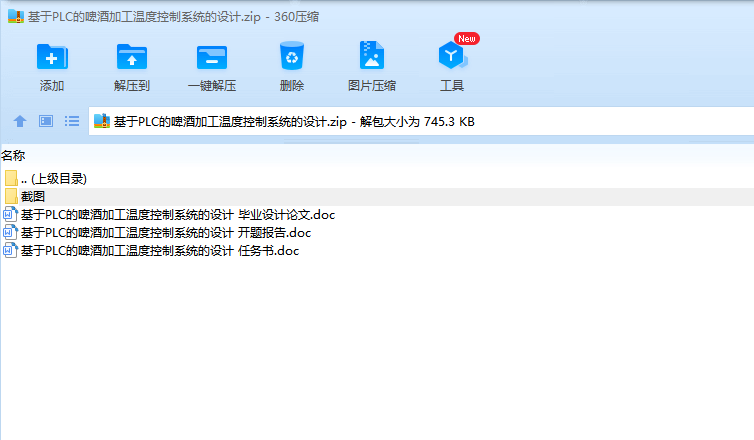摘 要
啤酒发酵是啤酒生产中最重要的一道工序,是决定啤酒质量的最关键的一步。啤酒的发酵是把糖化的姜汁分解成乙醇,由于发酵时间长,过程机理复杂,影响发酵因素很多,对发酵过程缺乏精确的数学模型。从原料到发酵过程,如何控制好温度,压力,让发酵满足总生产工艺曲线,决定了啤酒的生产质量和生产效率,发酵过程是啤酒生产过程中的重要环节,发酵控制系统的任务就是将发酵酒液的实际温度控制在和标准发酵曲线相差有限的误差范围内。
过去的啤酒发酵过程,啤酒发酵罐多为人工现场操作调节,手工记录。但随着啤酒产量的不断增加,所需发酵罐也会增多,给生产啤酒带来极大的不便,造成生产质量的稳定,如何提高啤酒生产的综合自动化水平,增强啤酒产业实力成为一个好的研究课题。
为此,本文通过对啤酒生产发酵过程的工艺及关键问题的分析,基于PLC设计啤酒生产过程中啤酒发酵自动控制系统。
关键词:PLC 啤酒发酵 温度控制
Abstract
Beer fermentation is one of the most important procedure in beer production, is the most crucial step in determining the quality of beer. Beer fermentation is the breakdown of saccharification ginger into ethanol, due to the long fermentation time, the process mechanism is complex, many factors influencing the fermentation, the fermentation process is a lack of accurate mathematical model. From raw material to the fermentation process, how to control the temperature, pressure, and make full of the total fermentation technology curve, determines the production quality and production efficiency of beer, the fermentation process is the important link in the process of beer production, fermentation control system of the task is to control the fermentation liquid of actual temperature fermentation and standard curve is limited within the error range.
The beer fermentation, beer fermentation tank for artificial field operation adjustment, manual record. But as the increase of beer production, the fermentation tank will be needed to increase, produced beer to bring huge inconvenience caused by the stable quality of production, how to improve the comprehensive automation level of beer production, strengthen the beer industry to become a good research topic.
So far, this article through to the fermentation process of beer production process and the analysis of the key problems of beer production in the process of beer fermentation based on PLC design of automatic control system.
KEY WORDS: beer fermentation temperature control by PLC
目录
第一章 绪论 1
第二章 啤酒发酵过程简介 2
第一节 啤酒发酵设备 2
第二节 啤酒发酵工艺曲线 3
第三章 啤酒发酵自控系统PLC选型和配置 5
第四章 啤酒发酵自控系统PLC程序设计 7
第一节 编程软件的介绍 7
第二节 温度设定值的计算 9
第三节 PID回路计算 11
第四节 电磁阀控制 13
结论 14
致谢 15
参考文献 16
附录 17
